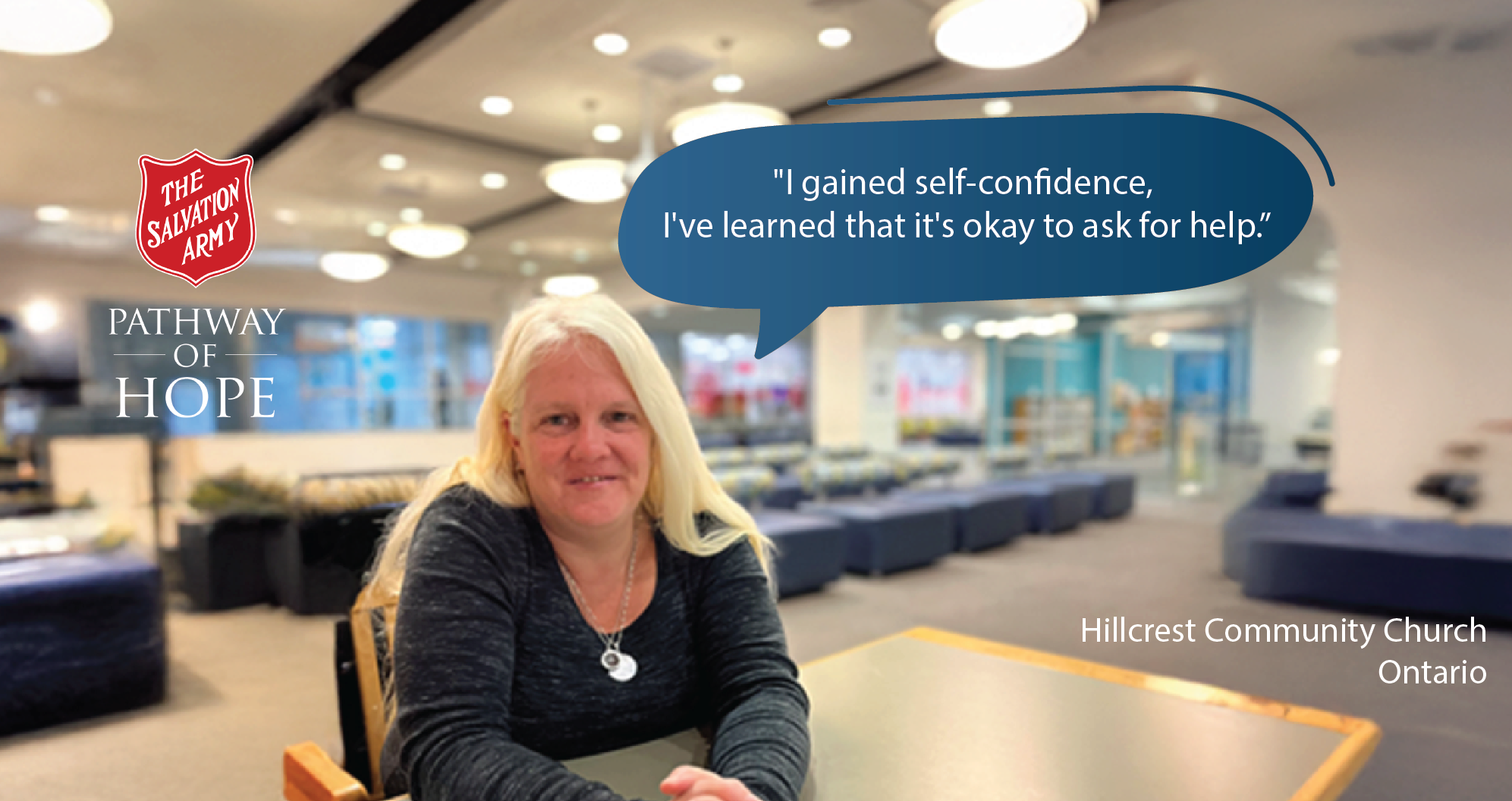When Diana* first connected with The Salvation Army, she was looking for guidance. Living in supportive housing through Sanctuary London, she felt ready to do more with her time — to contribute, connect, and move forward. Though she held a diploma in Office Administration and had a strong circle of support through her family, friends, and faith
Read More

People living in poverty often face a cycle of recidivism – where they move from crisis to crisis remaining vulnerable. The Pathway of Hope approach focuses on supporting people in achieving stability through strengths-based case management. We walk alongside participants to support them in shifting their life’s trajectory from repeated crises toward sufficiency. There are four general stages that encompass this journey: (1) crisis, (2) vulnerability, (3) increasing stability, and (4) sufficiency.

Crisis and Vulnerability
People will often come to The Salvation Army in crisis (stage 1), requiring assistance with basic needs such as clothing, food, or shelter. With basic assistance many move from crisis to vulnerability (stage 2), as the initial crisis is alleviated, but often they return, repeating over and over again in the cycle of recidivism. This cycle is costly to them and the organizations that provide social supports. In fact, The Bridgespan Group found that the cycle of crisis and vulnerability is one of the least diagnosed and costliest areas across the social services sector.
Increasing Stability
Increasing stability (stage 3) is the focus of the Pathway of Hope approach. To break the cycle of recidivism we partner with individuals and families to develop a customized plan and take action to address root cause issues and barriers. Increasing stability is only possible through effective use of both internal resources, and in partnership with other community agencies and stakeholders.
Sufficiency
In some instances we may be able to support people in reaching the fourth stage, sufficiency. When people achieve sufficiency they are able to meet basic needs with their own resources, are connected with their community, and have assets and supports to weather a temporary crisis.
The Salvation Army is an international Christian church and we recognize that Pathway of Hope is incomplete if we only take a socio-economic lens. Providing holistic care to foster dignity and hope is critical for participants in reaching the stages of increasing stability, and later, sufficiency. The Salvation Army is uniquely positioned to nourish hope and support participants through the intentional integration of spiritual and religious care with casework services.









